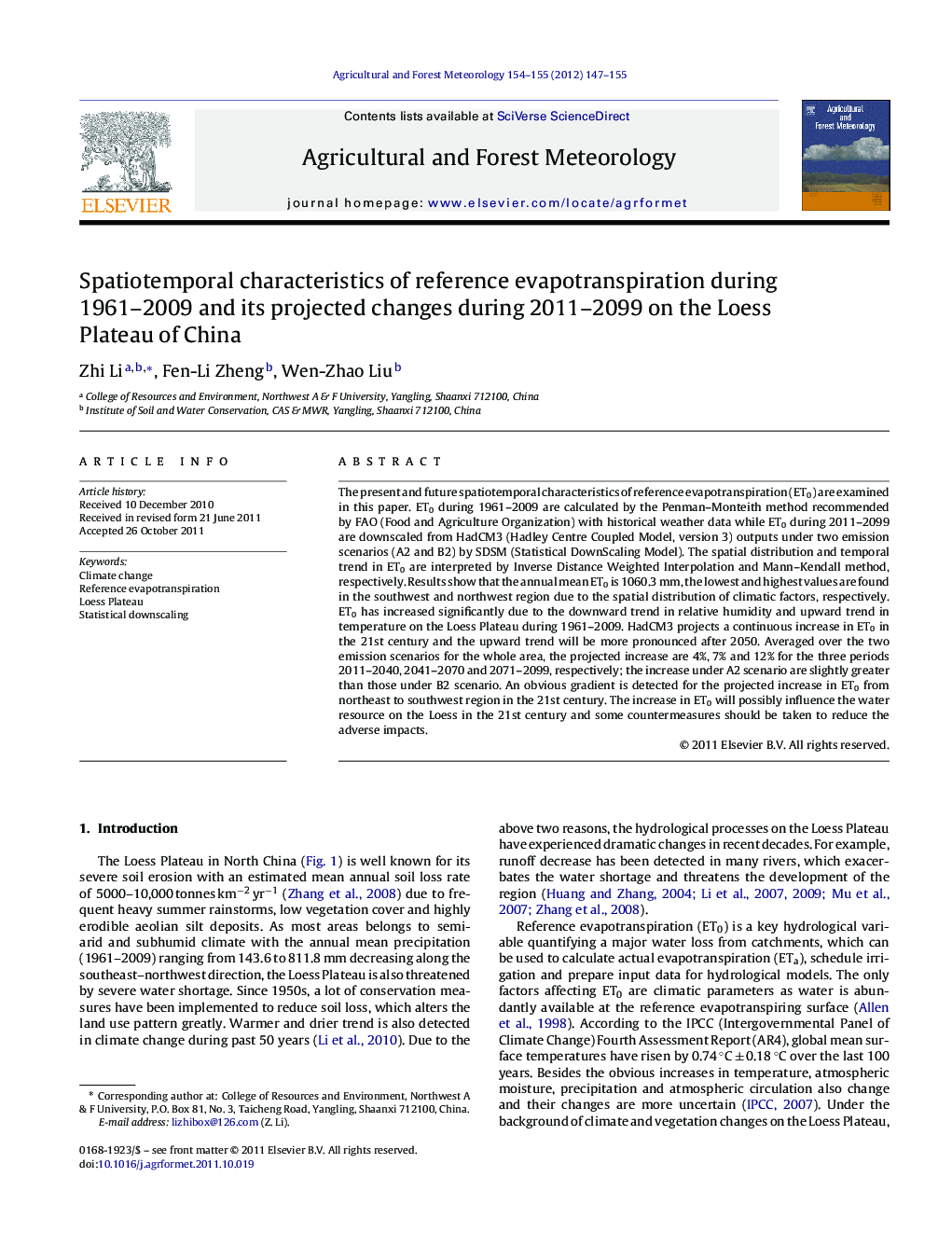| کد مقاله | کد نشریه | سال انتشار | مقاله انگلیسی | نسخه تمام متن |
|---|---|---|---|---|
| 82094 | 158372 | 2012 | 9 صفحه PDF | دانلود رایگان |

The present and future spatiotemporal characteristics of reference evapotranspiration (ET0) are examined in this paper. ET0 during 1961–2009 are calculated by the Penman–Monteith method recommended by FAO (Food and Agriculture Organization) with historical weather data while ET0 during 2011–2099 are downscaled from HadCM3 (Hadley Centre Coupled Model, version 3) outputs under two emission scenarios (A2 and B2) by SDSM (Statistical DownScaling Model). The spatial distribution and temporal trend in ET0 are interpreted by Inverse Distance Weighted Interpolation and Mann–Kendall method, respectively. Results show that the annual mean ET0 is 1060.3 mm, the lowest and highest values are found in the southwest and northwest region due to the spatial distribution of climatic factors, respectively. ET0 has increased significantly due to the downward trend in relative humidity and upward trend in temperature on the Loess Plateau during 1961–2009. HadCM3 projects a continuous increase in ET0 in the 21st century and the upward trend will be more pronounced after 2050. Averaged over the two emission scenarios for the whole area, the projected increase are 4%, 7% and 12% for the three periods 2011–2040, 2041–2070 and 2071–2099, respectively; the increase under A2 scenario are slightly greater than those under B2 scenario. An obvious gradient is detected for the projected increase in ET0 from northeast to southwest region in the 21st century. The increase in ET0 will possibly influence the water resource on the Loess in the 21st century and some countermeasures should be taken to reduce the adverse impacts.
► The present spatiotemporal characteristics of ET0 on the Loess Plateau were examined.
► ET0 has increased significantly during 1961–2009.
► HadCM3 projects a continuous increase in ET0 in the 21st century.
► ET0 will increase with a gradient from northeast to southwest in the 21st century.
Journal: Agricultural and Forest Meteorology - Volumes 154–155, 15 March 2012, Pages 147–155